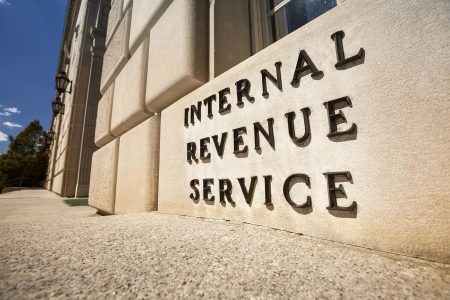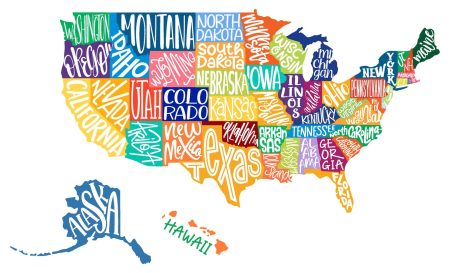This is a published version of our weekly Forbes Tax Breaks newsletter. You can sign-up to get Tax Breaks in your inbox here.
Things don’t always go the way you expect.
As I type this, I am seated in the waiting area at Philadelphia International Airport, wondering if my flight will take off. I am supposed to be on my way to a tax conference in Chicago. But my family, like millions of other travelers today, have been impacted by a widespread computer outage. The glitch has been blamed on a software update by cybersecurity firm CrowdStrike, resulting in Windows systems experiencing the dreaded “Blue Screen of Death” (BSOD) while booting.
Several flights have been canceled, while others, like mine, are simply delayed. It’s a good lesson in patience for me, and also serves as a good reminder about having a backup plan (we’ve already started looking into options for rebooking).
While this situation is out of our control, sometimes, travelers can be grounded for reasons they can control—like delinquent taxes. Yes, that’s a real thing. Under IRC Section 7345, which targets taxpayers with “seriously delinquent tax debt,” a U.S. passport can be denied or revoked for “seriously delinquent” tax debt. Currently, the threshold for what qualifies as “seriously delinquent” is $62,000 (including interest and penalties). A taxpayer’s challenge to the rule as being unconstitutional has already failed.
One way to escape a bad result? Rely on a trusted tax pro—and not social media—for your tax advice. You’ve seen these warnings before, but the IRS has again issued a consumer alert after seeing bad advice circulating on social media about several credits. (☆) Top of the list? The non-existent “Self Employment Tax Credit.” Similar to misleading marketing around the Employee Retention Credit (ERC), inaccurate information suggests many people qualify for the tax credit and payments of up to $32,000 (some companies promise over $36,000) when those taxpayers do not qualify. Also making the rounds? Inaccurate info about the fuel tax credit and the child tax credit. Let’s be careful out there.
If you do find yourself in trouble—in an exam or audit—you have some choices, including whether to give the IRS more time. Giving the IRS more time to audit you sounds counterintuitive or even crazy, but it’s not always a bad idea. The IRS normally has three years to audit, measured from the return due date or filing date, whichever is later. But this three years is doubled if you omitted 25% or more of your income (the IRS has no time limit if you never file a return). If you’re getting close to the deadline, agreeing to more time could help you reach a favorable resolution.
Another choice the IRS may want you to make? Whether or not to settle. The IRS campaign against syndicated conservation easements has been crowding Tax Court dockets. To help clear some space, the IRS announced that it would send out settlement offer letters to “certain taxpayers” in July. A look at a redacted copy gives the impression that it’s a pretty generous offer.
If you do get hit with an assessment, including penalties, you may be able to find some breathing room. For example, companies that pay independent contractors more than $600 are required to file an IRS Form 1099-NEC, Nonemployee Compensation. If a taxpayer fails to file an information return, or doesn’t file it properly, the IRS may impose penalties. Treasury released final regulations in 2023, making filings of ten or more information returns subject to electronic filing and potentially subject to penalties for wrongful filings. Fortunately, filers may be able to rely on reasonable cause defenses for a waiver or abatement of the penalties.
You should also plan to stay out of trouble. The IRS has issued more guidance on the withdrawal and eligibility requirements for inherited IRAs—this time in the form of final regulations. By law, you are required to withdraw funds from your retirement account each year after you reach age 73 (climbing to 75 in 2033)—that amount is your required minimum distribution, or RMD.
Before the SECURE Act, if you inherited a retirement account, you could minimize the tax consequences by taking distributions over your life expectancy. Under the new rules, if you inherit a retirement account, you can withdraw all the money as a lump sum or over ten years—which earned it the cleverly-named 10-year RMD Rule.
The final regulations (☆) confirm the general guidance in the proposed regulations: distributions to a beneficiary must be made “at least as rapidly” as while the beneficiary is living, and a complete distribution must be made within ten years. That means that if the original IRA owner was taking RMDs under the life expectancy rules, what’s left in the account has to be distributed to the beneficiaries at the same rate or faster—you can’t take fewer distributions. However, if the original IRA owner dies before the RMDs have begun, the interest must be distributed within five years after death or over the life or life expectancy of the designated beneficiary, with the distributions generally beginning not later than one year after the date of death.
Of course, the best planning can’t fix everything (I’m not sure I’m ever getting to my conference), though it can mitigate a bad situation. That’s why it remains important to keep on top of changes, whether at the airport while traveling (!) or throughout the year when it comes to taxes. We aim to keep you informed—but if you see something (a topic, a question, or an update) that you think we should cover, please let us know.
Enjoy your weekend!
Kelly Phillips Erb (Senior Writer, Tax)
Articles marked with (☆) are premium content and require you to log-in with your Forbes membership credentials. Not a subscriber yet? Click here to sign up.
Taxes From A To Z: H Is For Home Office Deduction
In past years, if you were an employee who worked from home, you could deduct your home office expenses as a miscellaneous itemized deduction on Schedule A.
That’s no longer the rule. As a result of the Tax Cuts and Jobs Act (TCJA), for the tax years 2018 through 2025, you cannot deduct home office expenses if you are an employee. This is true even if you’re working from home because it’s convenient for your employer.The TCJA did not change the home office expense rules for self-employed persons. If you are self-employed, you can continue to deduct qualifying home office expenses.
To qualify for the home office deduction, the part of your home attributable to business must be “exclusively and regularly for your trade or business” and that part of your home must be your principal place of business; a place where you meet or deal with patients, clients, or customers in the normal course of your trade or business; or a separate structure used in connection with your trade or business. In other words, to be deductible, your home office must be your actual office and not just at your home for convenience. And more importantly, if you use part of your home as a workspace, it must be space that is used solely for business.
The most common way to calculate the home office expense used to be to pro-rate: simply figure the amount of space attributable to your business and compare with the total. For example, if your home office space is 200 square feet and your home is 2000 square feet, you would claim 10% (200/2000) of your home-related expenses (insurance, taxes, mortgage interest, etc.) as a home office deduction.
Since the 2013 tax year, taxpayers could opt to use the simplified option for the home office deduction. With the simplified option, you could claim a standard deduction of $5 per square foot of home used for business up to a maximum of 300 square feet.
Not sure which method to use? Run the numbers and see what is the most tax-beneficial.
Statistics
According to the IRS, in 2019, there were an estimated 249,000 adults in the U.S. with gross assets of $11.4 million or more, representing the top .10% of all adults in the population. Together, they owned nearly $7.6 trillion in assets and just over $352 billion in debt, making their combined net worth $7.2 trillion. For purposes of this data, the $11.4 million threshold is significant because it represents the federal estate tax filing exemption amount for 2019—the year that the data was surveyed. The federal estate tax exemption amount is the amount of assets that can pass free of federal estate, gift, and generation-skipping taxes.
(The exemption amount for decedents dying in 2024 is $13,610,000 per person—up from $12,920,000 in 2023—or $27,220,000 per married couple.)
Often, wealthy taxpayers engage in advanced estate planning transactions to mitigate or eliminate the potential for tax. One of these transactions is the Optimized Charitable Lead Annuity Trust (OCLAT)—a highly technical and advanced version of the charitable lead annuity trust. The ideal target for OCLAT has a high income (or is selling a highly-appreciated asset) and needs a large federal/state tax deduction, is philanthropic, has sufficient savings outside the OCLAT, and wants to minimize inheritance taxes paid by children.
Some of what makes an OCLAT workable is the relatively low charitable hurdle rate (5.2% in August 2024) together with a favorable market. With the OCLAT, the IRS bets that your OCLAT investments won’t outperform the 5.2% hurdle, but if they do, you can keep the excess. And if the IRS hurdle rate decreases (which is expected if the Federal Reserve starts to cut rates), the OCLAT will become even more attractive.
Not interested in an OCLAT, but want to know more about the über-wealthy? Check out the Forbes 400, our annual ranking of the richest Americans.
Questions
This week, a reader asks:
My wife and I need to file an amended tax return changing our status from married filing separate to married filing joint (long story).
I am using software to complete the 1040-X form. My question is for the section where I have to list what was on the original return. Do I just list what was on my return and the IRS will pull her return? Or do I list what they were combined? For example, for tax paid if I had $100 and she had $50, do I list just my $100 or do I list our combined amount of $150?
You can easily amend married filing separate (MFS) returns to a married filing jointly (MFJ) return.
(The opposite, however, is not true. You can only amend an MFJ return to an MFS return before the filing deadline—without regard to an extension).
You’ll choose one of the returns (typically, the most complicated) and enter those amounts in column A on Form 1040-X. You’ll add the information from your spouse’s return as an adjustment in column B, and the total amount in column C.
So, in your example, you’d put your $100 in column A, your wife’s $50 as an adjustment in column B, and the combined total of $150 in column C.
You only need to amend one of the returns. When the IRS receives the amended return, it will disregard the other MFS return (the agency will use data matching to determine which return to ignore).
—
Do you have a tax question or matter that you think we should cover in the next newsletter? We’d love to help if we can. Check out our guidelines and submit a question here.
A Deeper Dive
Maryland’s digital advertising tax—codified as the Digital Advertising Gross Revenue Tax Act—is in the news again following a recent ruling by U.S. District Judge Lydia Kay Griggsby, in favor of the state.
The tax—which ranges from 2.5% to 10%, depending on annual gross revenues, is imposed on taxpayers who provide digital advertising services in Maryland with global annual gross revenues of at least $100 million. Digital advertising services are those on a digital interface (defined as “any type of software, including a website, part of a website, or application, that a user is able to access”). This includes advertisements in the form of banner advertising, search engine advertising, interstitial advertising, and other comparable advertising services.
There have been several significant legal challenges filed in response to the tax. Most recently, a challenge filed by the U.S. Chamber of Commerce and other trade associations, including the Internet Association, NetChoice, and the Computer & Communications Industry Association, was based on the notion that the “pass-through prohibition” violated the First Amendment. Judge Griggsby ruled that the provision focused on conduct rather than speech—a critical distinction since it didn’t fully infringe on the plaintiff’s First Amendment rights.
With that, the lawsuit was dismissed. Expect more to come (at least one suit, filed by Apple, remains in court). (☆)
Tax Filings And Deadlines
📅 July 31, 2024. Due date for individuals and businesses in parts of Massachusetts affected by severe storms and flooding that began on September 11, 2023. More info here.
📅 September 16, 2024. Third quarter estimated payments due for individuals and corporations.
📅 September 16, 2024. Due date for 2023 calendar year partnership returns (Forms 1065) and S corporations (Forms 1120-S) filed on extension.
Tax Conferences And Events
📅 July-September, 2024. IRS has announced the continuing education (CE) agenda for the 2024 Nationwide Tax Forum. Attendees can earn up to 19 CE credits over three days by attending one of the five forums in Chicago (July 9-11), Orlando (July 30-August 1), Baltimore (August 13-15), Dallas (August 20-22), or San Diego (September 10-12). Registration required.
Positions and Guidance
The American Institute of CPAs (AICPA) has submitted comments to the IRS concerning proposed regulations focused on reporting transactions with foreign trusts, receiving large foreign gifts, and dealing with loans and property from foreign trusts (REG-124850-08). The AICPA has also requested to testify at the August 21, 2024, IRS hearing on the proposed regulations.
Noteworthy
Baker McKenzie has announced that Nadja Ruiz has joined the firm’s tax practice in Mexico City as a partner. Ruiz’ arrival closely follows other recent arrivals to the firm’s North America Tax Practice, including Cara Harrison and Rob Clary in Chicago and Emmanuel Sala in Toronto.
Edwin Coe has announced the addition of Morag Ofili as a partner on the firm’s tax team. Ofili works in a wide range of private client litigation and contentious tax services ranging from tribunal litigation and cross-border tax investigations, to trust and estate disputes, fraud, judicial review, and professional negligence claims.
Connell Foley has announced that four lawyers have been promoted to partner in its tax group: Mary Goldhirsch, Brittany Miano, Michael Mirone, and Karin Spalding. Sara Jane Holland is also joining the group as Of Counsel.
—
If you have career or industry news, submit it for consideration here.
Trivia
What year did the IRS introduce its “Dirty Dozen”?
A. 2000
B. 2002
C. 2006
D. 2010
Find the answer at the bottom of this newsletter.
In Case You Missed It
Here’s what readers clicked through most often last week:
You can find the entire newsletter here.
Trivia Answer
The answer is (B) 2002.
The “Dirty Dozen” is an annual list of common scams taxpayers may encounter. Many of these schemes peak during tax filing season as people prepare their returns or hire someone to help with their taxes. The list of 12 scams and schemes—hence the name—started in 2002.
You can read more about this year’s Dirty Dozen here.
Feedback
How did we do? We’d love your feedback. If you have a suggestion for making the newsletter better, let us know.
Read the full article here
















